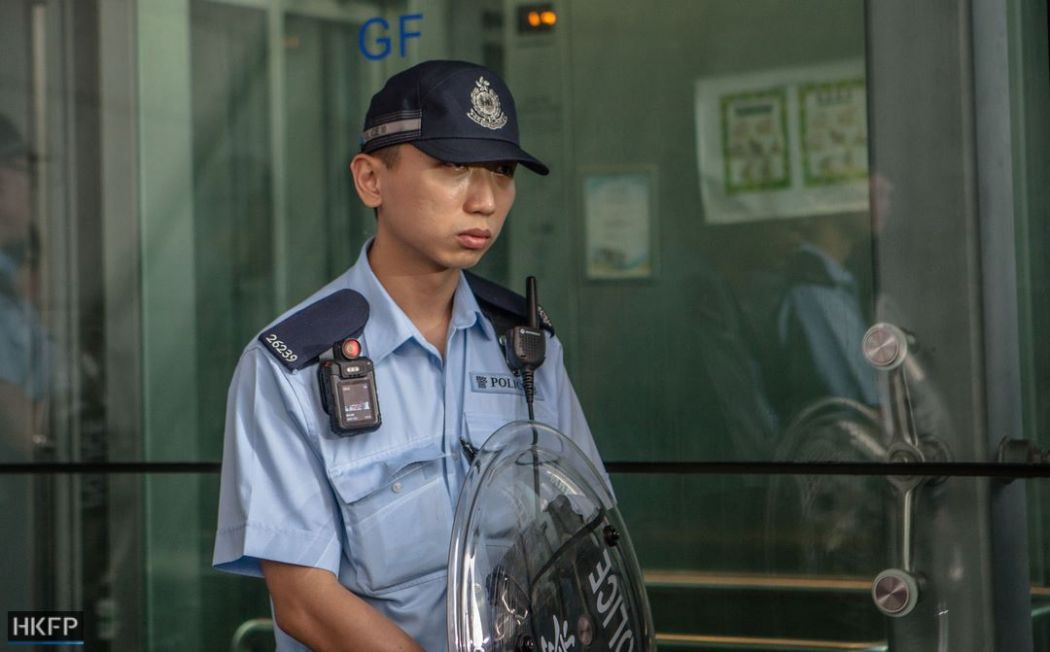Back in the day—that long lost day when Hong Kong wasn’t bitterly polarised by politics and spite—they were known as “Asia’s finest” and respected by every law-abiding citizen in the city.
Today, for many Hongkongers, especially the younger generation, the Hong Kong Police Force has become Public Enemy No. 1—an army of more than 30,000 officers wielding batons and firing tear gas, pepper spray, beanbag rounds and rubber bullets who stand squarely between them and their quixotic quest to protect and secure the special freedoms accorded to them in this Chinese city whose celebrated uniqueness is fast disappearing under their watch.

Twenty-two years after the handover from British to Chinese sovereignty, the battle for Hong Kong’s soul has never been more fierce. And it is the hundreds of thousands of young demonstrators demanding the total withdrawal of a proposed extradition bill— legislation that could see any one of them tried and jailed on the mainland on any number of trumped-up charges—who have taken the lead in the resistance to Beijing’s increasingly heavy-handed attempts to bring Hong Kong into the fold of the central government’s authoritarian rule.
Ever since the 79-day Occupy standoff of 2014, Hong Kong has been locked in a yellow vs. blue contest for sympathy and support, those being the respective code colours for the youthful protesters and the cops lined up against them during Occupy.
During these past two weeks, we have seen that battle furiously renewed with protesters and police accusing one another of unwarranted violence and brutality.
Video evidence demonstrates ill intentions and guilt on both sides.

Some protesters are shown throwing bricks and other objects at the police and charging police lines with iron rods and metal barricades. Plainly, they wanted to hurt police officers, and they did: 22 officers, in addition to 58 protesters, were injured during the clashes.
On the other hand, the police response to these assaults, perpetrated by a fractional minority of the otherwise peaceful millions who have marched and rallied against the extradition bill, clearly appears to have been excessive, aimed more at inspiring fear and inflicting pain than managing and controlling the massive crowds.
Indeed, on June 12, a day of violent clashes between protesters and police outside government headquarters in Admiralty, the police fired more than 150 rounds of tear gas—nearly double the amount they let fly on the first day of Occupy—as well as 20 beanbag rounds (never employed during Occupy) and an unspecified number of rubber bullets (also non-existent during Occupy).
Officers could be seen shooting at and manhandling not just brick-throwers and pole-bearers but also peaceful, unarmed protesters and journalists. Moreover, warnings were not always issued before shots were fired, as is supposed to be police protocol.

It was also disturbing to see video and read reports of some officers who seemingly engaged in angry argumentative exchanges with protesters who had verbally confronted them, behaviour that fell well below the standards of professionalism required by the force.
Predictably, just as on the first day of Occupy five years ago, when police fired 87 rounds of tear gas at peaceful pro-democracy demonstrators, the over-the-top June 12 police response to the extradition protesters served to energise rather than quell their campaign.
No doubt spurred on by police violence, a one-million-person protest staged three days prior to the June 12 violence swelled into a nearly two-million strong demonstration four days later. And this time, among many others, hundreds of Hong Kong mums, appalled by what they saw as a police attack on their children, also hit the streets with the rallying cry: “Don’t shoot our kids!”
In another pronounced echo of Occupy, since the initial show of force on June 12, the police have remained limply passive at all subsequent protests—including, remarkably, a 15-hour siege of police headquarters in Wan Chai last Friday during which thousands of angry demonstrators, demanding an independent inquiry into alleged police brutality, blocked entrances and exits and threw raw eggs against the building’s facade on which they also spray-painted derogatory graffiti messages such as “Fuck the POPO.”

This extraordinary spectacle revealed a police force, which a week earlier had lashed out at the people of Hong Kong, now effectively neutered and held hostage by those same people.
One can easily imagine the acrid feelings among the officers trapped in their own building that night—hapless and helpless despite all their state-of-the art weapons and anti-riot gear—as egg yolk and insults rained down upon them: extreme frustration, boiling anger and a deep and abiding resentment.
It was a sad and humiliating state of affairs not just for those who were once regarded as “Asia’s finest” but also for everyone else who cares about Hong Kong and hopes for a better future in a city wracked and paralysed by internal divisions.

Like just about everyone and everything else in Hong Kong, our police force had been thoroughly co-opted and politicised and now finds itself in a joyless state of nearly schizophrenic confusion: One day it’s cracking heads, and on the next it is utterly impotent in the face of a night-long siege of its own headquarters.
One wonders: Which side of the force will show up this week, and the next, and the next?
Kong Tsung-gan‘s new collection of essays – narrative, journalistic, documentary, analytical, polemical, and philosophical – trace the fast-paced, often bewildering developments in Hong Kong since the 2014 Umbrella Movement. As Long As There Is Resistance, There Is Hope is available exclusively through HKFP with a min. HK$200 donation. Thanks to the kindness of the author, 100 per cent of your payment will go to HKFP’s critical 2019 #PressForFreedom Funding Drive.

